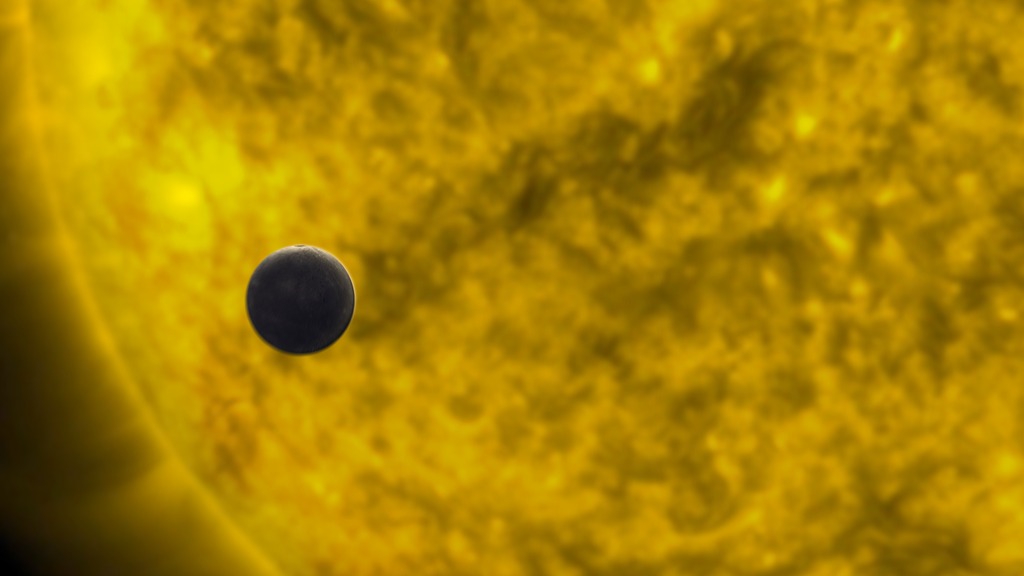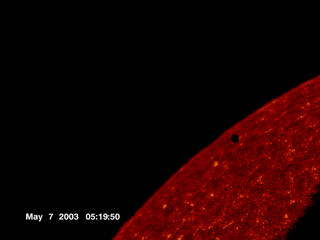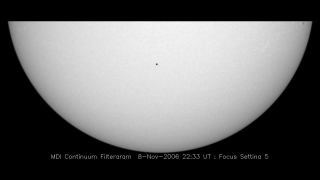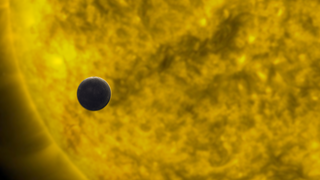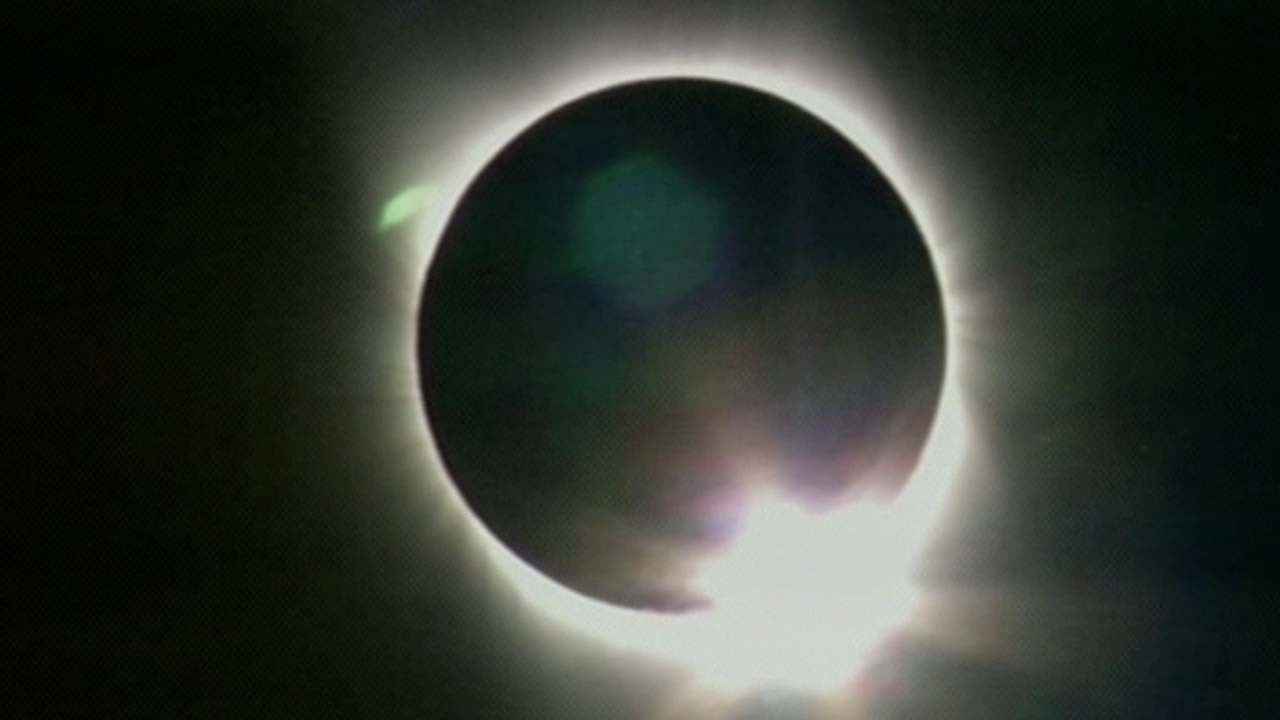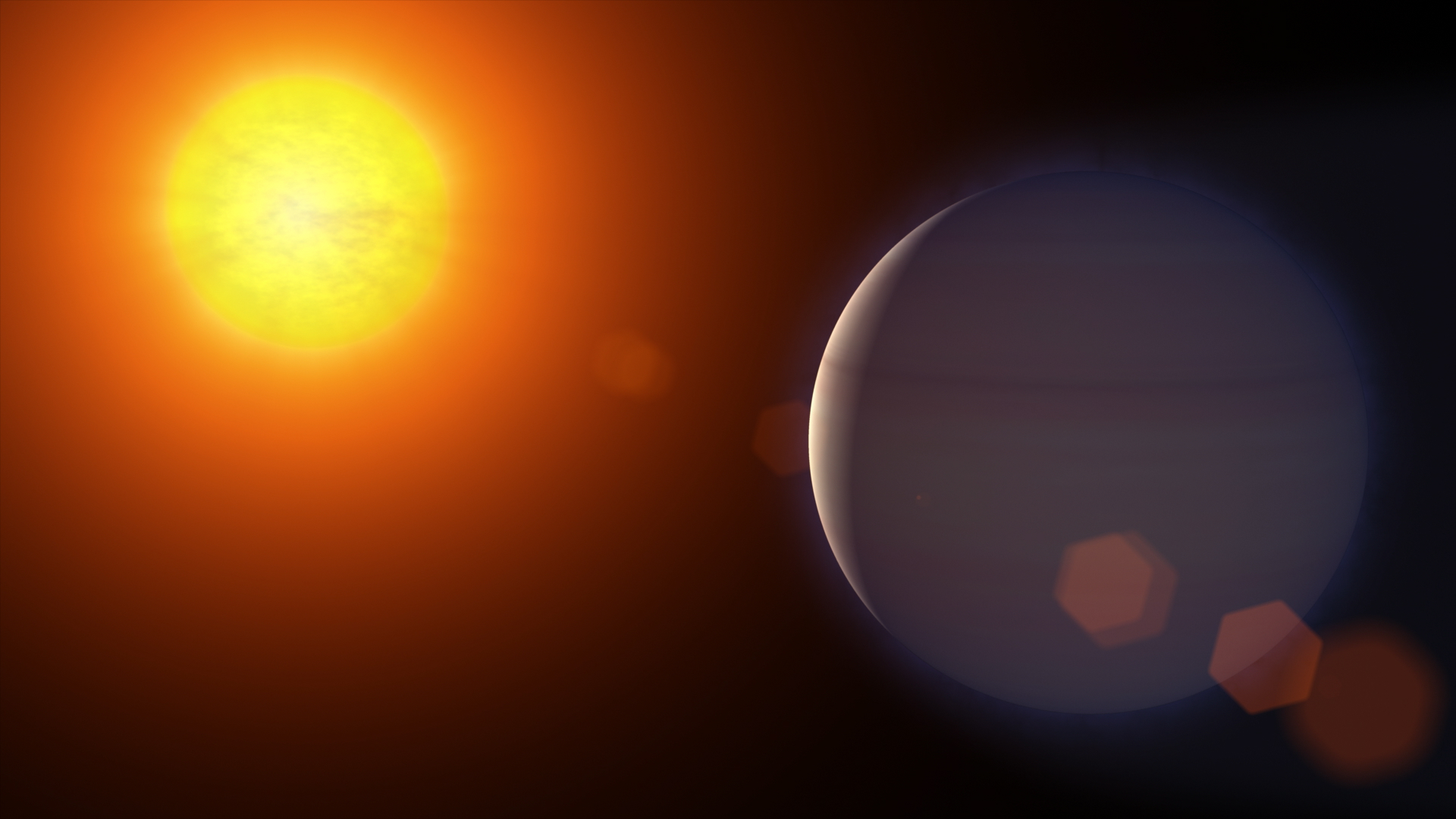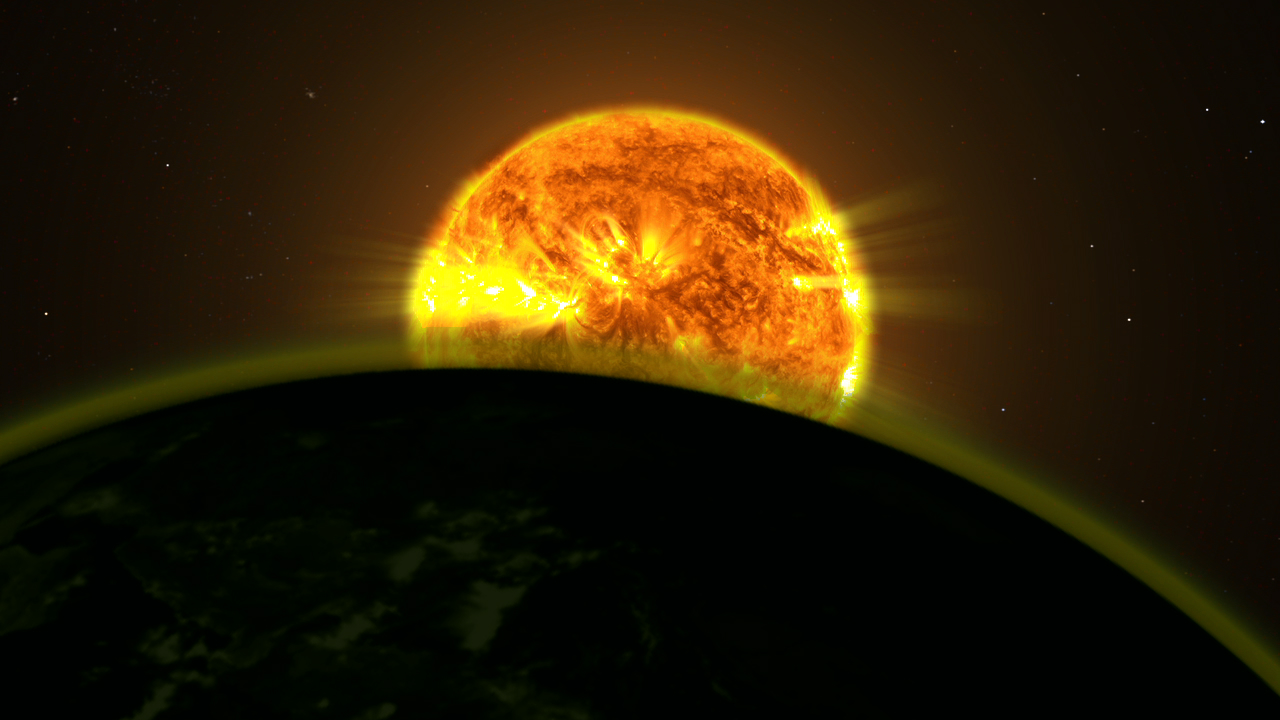Mercury Transit May 2016
Overview
On Monday, May 9, 2016, Mercury will transit across the sun. This rare event will begin at 7:11 AM EDT and will continue for more than seven hours. NASA's Solar Dynamics Observatory will watch this transit from start to finish, ultra high definition images of the event in near real time as it unfolds. This is the first time SDO has captured this transit, which hasn't occurred since 2006. It won't occur again until 2019. NASA Scientists use the transit method to learn more about planets both in our solar system and beyond. Scientists can monitor the brightness of stars, looking for dips in that brightness that signal a transiting planet. Using the transit method, scientists can determine the distance of these planets from their stars, as well as their size and composition. Upcoming missions like the Transiting Exoplanet Survey Satellite will use the transit method to search for planets orbiting nearby stars.
Resources
Mercury Transit May 9, 2016
Go to this pageMercury transiting the Sun || MercuryTransit_fr_00074_print.jpg (1024x576) [68.6 KB] || MercuryTransit_fr_00074_searchweb.png (180x320) [65.8 KB] || MercuryTransit_fr_00074_web.png (320x180) [65.8 KB] || MercuryTransit_fr_00074_thm.png (80x40) [6.0 KB] || 1920x1080_16x9_60p (1920x1080) [0 Item(s)] || Mercury_Transit_ProRes.webm (1920x1080) [2.3 MB] || Mercury_Transit_H264.mov (1920x1080) [242.6 MB] || Mercury_Transit_ProRes.mov (1920x1080) [2.6 GB] ||
Mercury Transit of the Sun
Go to this pageThe planet Mercury is visible passing between the Sun and the TRACE spacecraft. Data collected on May 7, 2003, from 04:32:04 to 08:08:57. || a002735.00005_print.png (720x480) [358.5 KB] || a002735.00240_print.png (720x480) [528.2 KB] || MercuryTransit_640x480_pre.jpg (320x240) [5.5 KB] || MercuryTransit_320x240_pre.jpg (320x240) [5.3 KB] || a002735.webmhd.webm (960x540) [4.3 MB] || MercuryTransit_640x480.mpg (640x480) [7.7 MB] || a002735.m2v (720x480) [10.4 MB] || 720x480_4x3_30p (720x486) [16.0 KB] || a002735.dv (720x480) [54.9 MB] || a002735.mp4 (640x480) [2.5 MB] || MercuryTransit_320x240.mpg (320x240) [2.0 MB] ||
Mercury Transit from TRACE (White Light)
Go to this pageThis is a view of the planet Mercury (a black dot) as seen by TRACE through its white light optical telescope. Because the TRACE field-of-view is much smaller than the solar disk, the spacecraft is repointed three times during the transit (creating the position jumps of the movie).This movie was generated from telemetry which has undergone a minimum of processing (to deliver quickly for the media) so data dropouts and other quick-processing artifacts may be visible. Special thanks to Dawn Myers of the TRACE project for this effort. ||
Mercury Transit from SOHO/MDI
Go to this pageThis is a view of the planet Mercury (the tiny moving black dot) as seen by the SOHO MDI.The narrow field-of-view for this camera mode necessitates the addition of black bars at the top and bottom of the frame to match HD720 resolution.This movie was generated from telemetry which has undergone a minimum of processing (to deliver quickly for the media) so data dropouts and other quick-processing artifacts may be visible. Special thanks to Steele Hill of the SOHO project for this effort. ||
Venus Transit 2012 Composited Visuals
Go to this pageThese visualizations were generated by compositing the small field-of-view, high-cadence closeups of Venus with the full-disk, low-cadence imagery from Solar Dynamics Observatory (SDO). Two different instruments are used: the Helioseismic and Magnetic Imager (HMI) which sees light in the visible range, and the Atmospheric Imaging Assembly (AIA) which sees light in several wavelengths in the ultraviolet range. To find out more information about these instruments, check out The Atmospheric Imaging Assembly Tutorial.Some artifacts may be visible from the compositing, but you have to look pretty closely to see them.The color table threshold was raised for these images, reducing the amount of noise visible in the images. Note: There is an interesting artifact worthy of mention and clarification, and that is as Venus crosses the solar limb, the limb appears to be visible through the planet in some of the imagers (most notably the ultraviolet channels). Discussion with the scientists who built the imagers suggest this might be 'crosstalk' between the readouts of the four CCD panels that make up a complete image. It is an artifact of the imaging system. ||
Additional Resources
SDO: Year 6
Go to this pageThis ultra-high definition (3840x2160) video shows the sun in the 171 angstrom wavelength of extreme ultraviolet light. It covers a time period of January 2, 2015 to January 28, 2016 at a cadence of one frame every hour, or 24 frames per day. This timelapse is repeated with narration by solar scientist Nicholeen Viall and contains close-ups and annotations. 171 angstrom light highlights material around 600,000 Kelvin and shows features in the upper transition region and quiet corona of the sun. The video is available to download here at 59.94 frames per second, double the rate YouTube currently allows for UHD content. The music is titled "Tides" and is from Killer Tracks.Watch this video on the NASA Goddard YouTube channel.Complete transcript available. || SDO_Year6_HCblend_HD.png (1920x1080) [5.3 MB] || SDO_Year6_HCblend_HD.jpg (1920x1080) [545.9 KB] || SDO_Year6_HCblend_HD_print.jpg (1024x576) [179.5 KB] || SDO_Year6_HCblend_UHD.png (3840x2160) [19.7 MB] || SDO_Year6_HCblend_UHD.jpg (3840x2160) [1.2 MB] || SDO_Year6_HCblend_HD_searchweb.png (180x320) [59.6 KB] || SDO_Year6_HCblend_HD_thm.png (80x40) [4.8 KB] || 12144_SDO_Year_6_appletv.webm (1280x720) [50.5 MB] || 12144_SDO_Year_6_appletv.m4v (1280x720) [241.9 MB] || 12144_SDO_Year_6_appletv_appletv_subtitles.m4v (1280x720) [242.1 MB] || SDO_Year_6_SRT_Captions.en_US.srt [6.3 KB] || SDO_Year_6_SRT_Captions.en_US.vtt [6.3 KB] || 12144_SDO_Year_6_H264_Good_1920x1080_2997.mov (1920x1080) [1.4 GB] || 12144_SDO_Year_6_H264_Good_3840x2160_2997.mov (3840x2160) [9.1 GB] || 12144_SDO_Year_6_H264_Good_3840x2160_5994.mov (3840x2160) [10.2 GB] || 12144_SDO_Year_6_ProRes_3840x2160_5994.mov (3840x2160) [50.3 GB] ||
2016 Eclipse
Go to this pageSolar scientists Natchimuthuk Gopalswamy, Nelson Reginal, Eric Christian, and Sarah Jaeggli discuss the 2016 eclipse and how it is great preparation for the 2017 eclipse.Complete transcript available. || eclipse_promo_thumb.jpg (1280x720) [53.1 KB] || eclipse_promo_thumb_searchweb.png (320x180) [69.9 KB] || eclipse_promo_thumb_thm.png (80x40) [12.8 KB] || YOUTUBE_HQ_12147_2016.eclipse_promo_V2_youtube_hq.mov (1920x1080) [534.5 MB] || PRORES_B-ROLL_12147_2016.eclipse_promo_V2_prores.mov (1280x720) [1.5 GB] || APPLE_TV_12147_2016.eclipse_promo_V2_appletv.m4v (1280x720) [63.3 MB] || NASA_TV_12147_2016.eclipse_promo_V2.mpeg (1280x720) [383.5 MB] || 12147_2016.eclipse_promo_V2.mov (1920x1080) [2.7 GB] || YOUTUBE_HQ_12147_2016.eclipse_promo_V2_youtube_hq.webm (1920x1080) [11.6 MB] || APPLE_TV_12147_2016.eclipse_promo_V2_appletv_subtitles.m4v (1280x720) [63.4 MB] || 12147_2016_eclipse_PROMO.en_US.srt [2.0 KB] || 12147_2016_eclipse_PROMO.en_US.vtt [2.0 KB] || NASA_PODCAST_12147_2016.eclipse_promo_V2_ipod_sm.mp4 (320x240) [21.4 MB] ||
HD 189733b Exoplanet Animation
Go to this pageThe exoplanet HD 189733b lies so near its star that it completes an orbit every 2.2 days. In late 2011, NASA's Hubble Space Telescope found that the planet's upper atmosphere was streaming away at speeds exceeding 300,000 mph. Just before the Hubble observation, NASA's Swift detected the star blasting out a strong X-ray flare, one powerful enough to blow away part of the planet's atmosphere. ||
Alien Atmospheres
Go to this pageSince the early 1990's, astronomers have known that extrasolar planets, or "exoplanets," orbit stars light-years beyond our own solar system. Although most exoplanets are too distant to be directly imaged, detailed studies have been made of their size, composition, and even atmospheric makeup - but how? By observing periodic variations in the parent star's brightness and color, astronomers can indirectly determine an exoplanet's distance from its star, its size, and its mass. But to truly understand an exoplanet astronomers must study its atmosphere, and they do so by splitting apart the parent star's light during a planetary transit. ||
Looking for the Shadows of New Worlds
Go to this pageNASA Goddard astrophysicist Daniel Angerhausen discusses how astronomers may be able to maximize transit photometry to find planets like those in our solar system around other stars -- and possibly moons, rings, and asteroid groups as well. Watch this video on the NASA Goddard YouTube channel.For complete transcript, click here. || Photometry_Still_2.jpg (1280x720) [139.8 KB] || Photometry_Still_2_print.jpg (1024x576) [103.0 KB] || Photometry_Still_2_searchweb.png (320x180) [76.9 KB] || Photometry_Still_2_thm.png (80x40) [6.0 KB] || Photometry_FINAL_ProRes_1280x720_5994.mov (1280x720) [3.6 GB] || Photometry_FINAL-H264_Best_1280x720_5994.mov (1280x720) [1.5 GB] || G2015-081_Photometry_FINAL_V2_youtube_hq.mov (1280x720) [604.7 MB] || Photometry_FINAL-H264_Good_1280x720_2997.mov (1280x720) [123.6 MB] || Photometry_FINAL-MPEG4_1280X720_2997.mp4 (1280x720) [63.2 MB] || G2015-081_Photometry_FINAL_V2_HD.wmv (1280x720) [59.0 MB] || G2015-081_Photometry_FINAL_V2_appletv.m4v (1280x720) [151.8 MB] || Photometry_FINAL_ProRes_1280x720_5994.webm (1280x720) [27.3 MB] || G2015-081_Photometry_FINAL_V2_appletv_subtitles.m4v (1280x720) [149.2 MB] || Photometry_Final_SRT_Captions2.en_US.srt [5.1 KB] || Photometry_Final_SRT_Captions2.en_US.vtt [5.1 KB] || NASA_PODCAST_G2015-081_Photometry_FINAL_V2_ipod_sm.mp4 (320x240) [48.5 MB] ||
